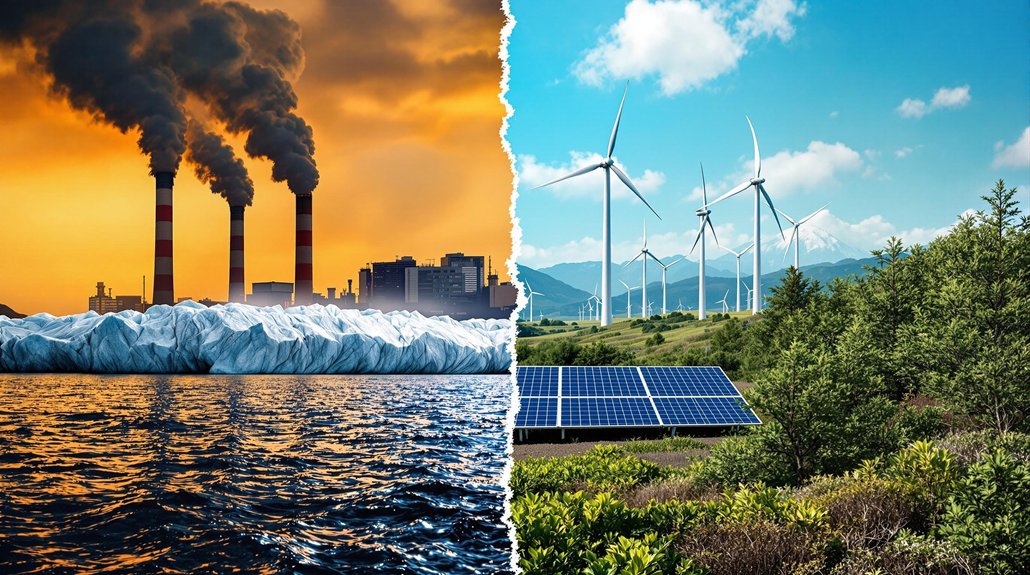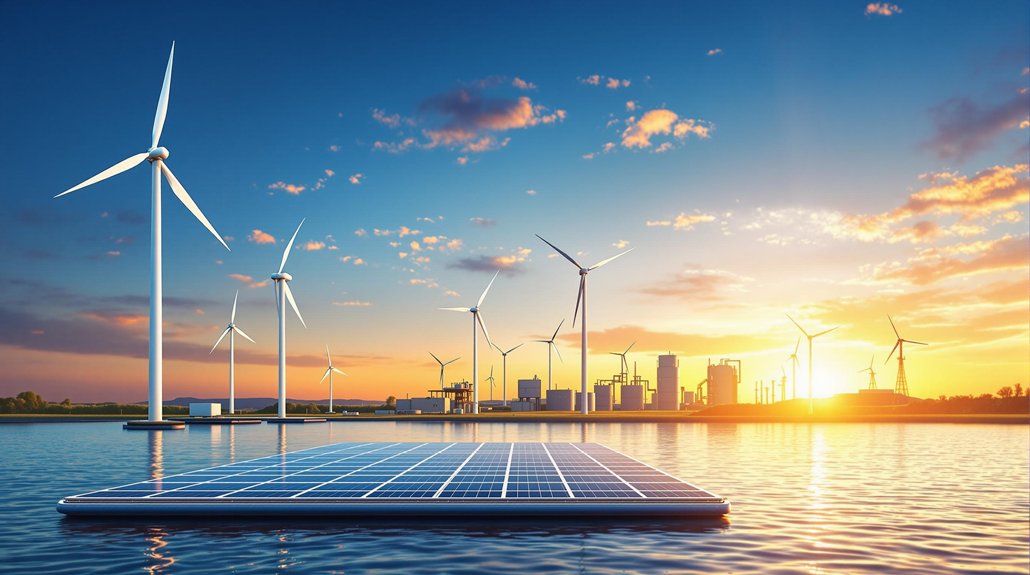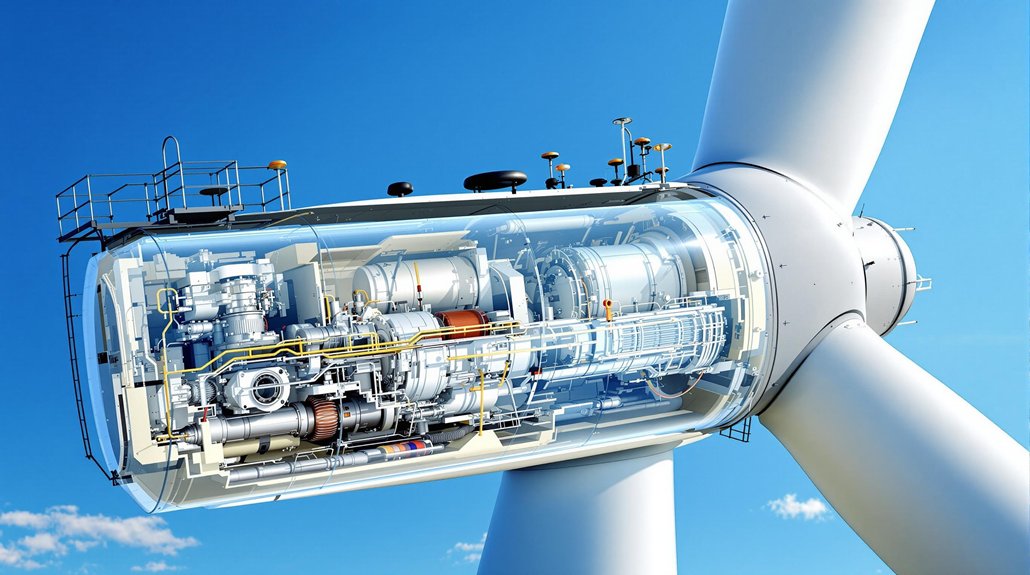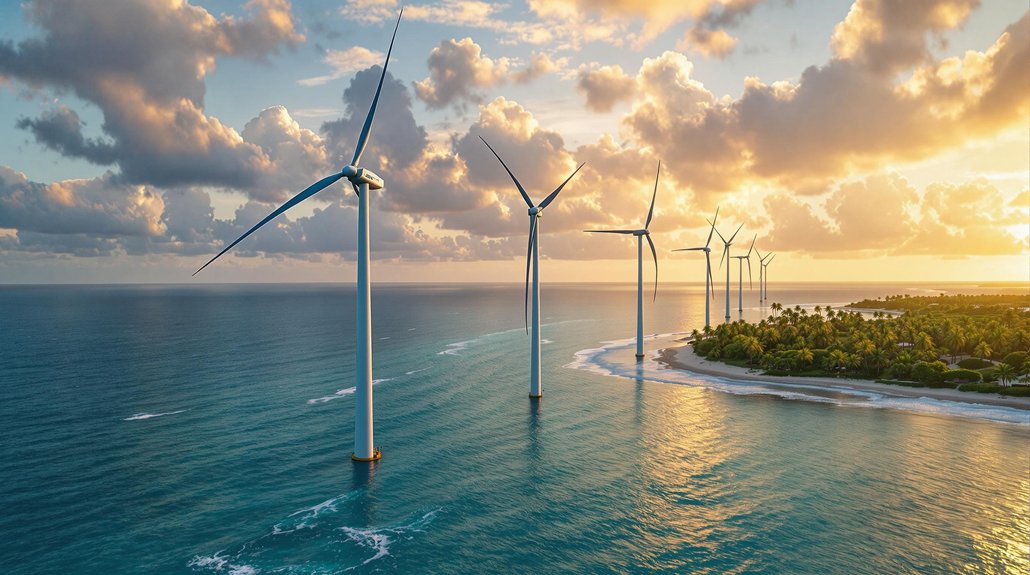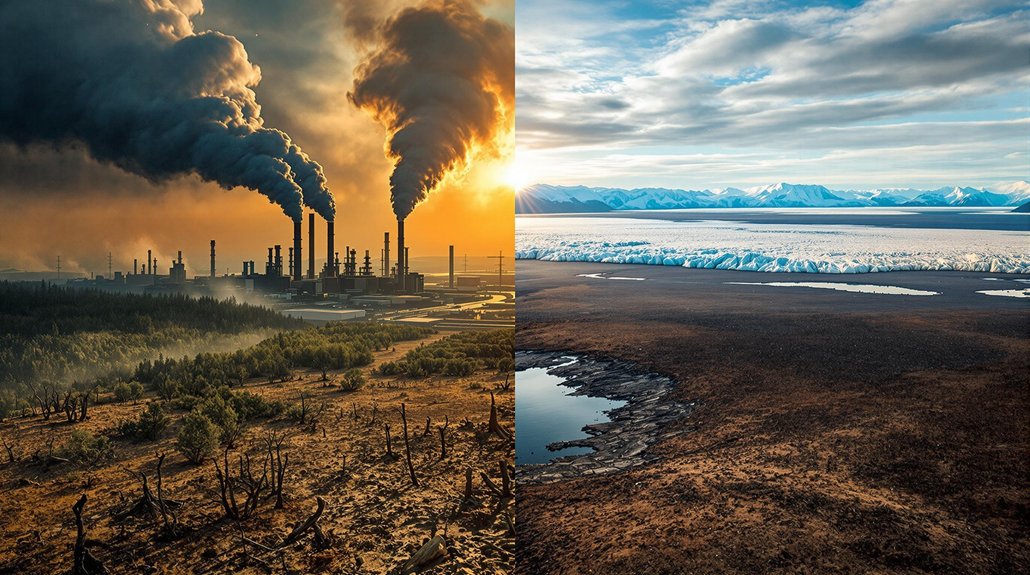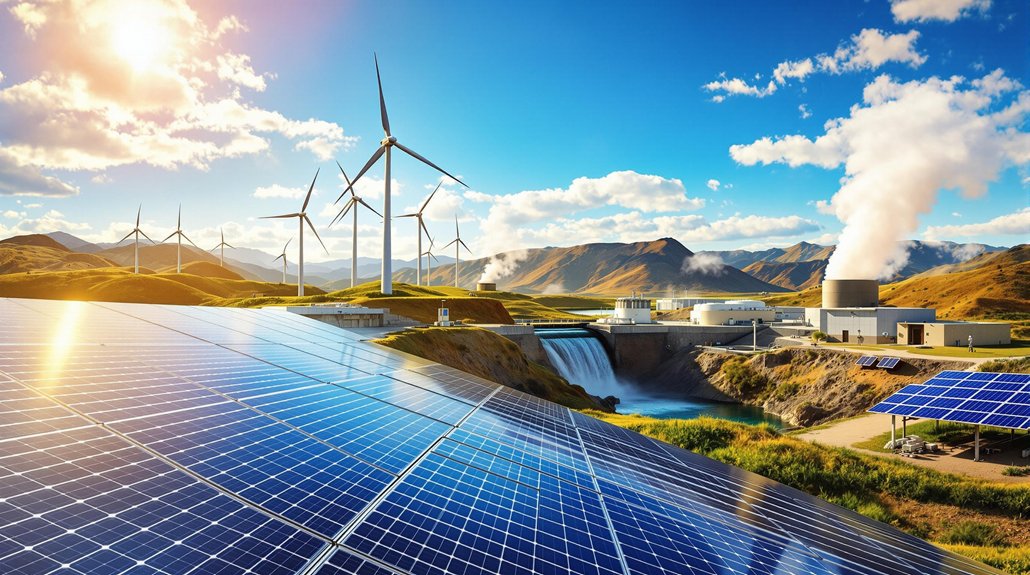Climate change occurs primarily from human activities releasing greenhouse gases. Earth’s temperature has risen about 1.7°F since 1970, causing more extreme weather like heat waves, stronger hurricanes, and heavy rainfall. Rising sea levels threaten coastal communities while ocean acidification endangers marine life. Solutions include renewable energy development, energy-efficient buildings, and reforestation efforts. Continued climate action can help mitigate these effects and protect our planet’s future.
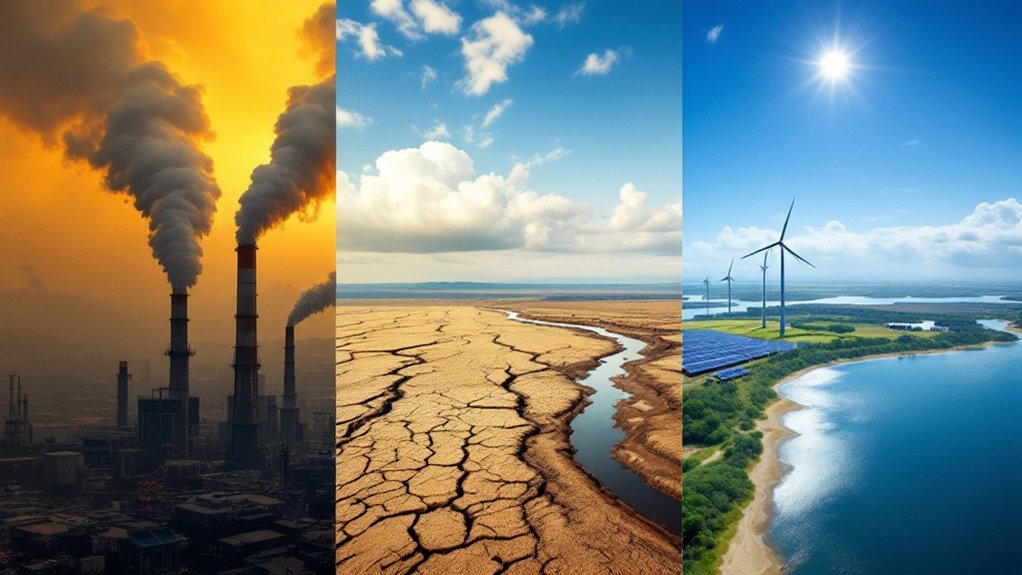
As the Earth’s climate system undergoes unprecedented changes, scientists worldwide are documenting alarming shifts in global temperature patterns. The planet’s average temperature has risen about 1.7°F from 1970 to 2023. This warming trend is primarily driven by human activities that release greenhouse gases into the atmosphere. Burning fossil fuels in cars, factories, and power plants releases carbon dioxide, while deforestation removes trees that would normally absorb this gas.
The effects of climate change are already visible. Heat waves are becoming more frequent and intense. Weather patterns are shifting, bringing heavier rainfall in some regions and severe droughts in others. Hurricanes and storms are growing stronger. These changes aren’t just weather anomalies—they represent a fundamental shift in our climate system.
Climate change isn’t just changing our weather—it’s reshaping our entire planetary system.
Our oceans are also transforming. Sea levels are rising as glaciers and polar ice caps melt. Oceans are becoming more acidic as they absorb carbon dioxide, threatening coral reefs and marine life. Coastal communities face increased flooding and erosion, putting millions of people at risk. The preservation and restoration of coastal ecosystems provides natural protection against these rising sea levels while sequestering more carbon per unit area than terrestrial forests.
Plants and animals are struggling to adapt. Many species are moving to cooler areas or changing the timing of important life events like migration and reproduction. Some habitats, like Arctic sea ice, are disappearing entirely. Scientists warn that climate change could drive many species to extinction.
Human health and society face serious challenges too. Heat-related illnesses are increasing. Disease-carrying mosquitoes and ticks are expanding their range. Food and water security are threatened by changing growing conditions and water availability. Climate change is expected to cause approximately 250,000 additional deaths per year between 2030 and 2050 from malnutrition, malaria, diarrhea, and heat stress.
Fortunately, solutions exist. Countries are investing in renewable energy like solar and wind power. Energy-efficient buildings and vehicles reduce emissions. Reforestation efforts help absorb carbon dioxide. Some communities are building stronger infrastructure to withstand extreme weather. The integration of energy storage technologies is proving crucial for stabilizing power grids and ensuring consistent distribution of renewable energy. Farmers are developing heat-resistant crops. Coastal areas are restoring wetlands as natural buffers against storms and flooding.
These combined efforts to reduce emissions and adapt to changes already underway represent humanity’s response to one of its greatest challenges.
Frequently Asked Questions
How Quickly Can We Reverse Climate Change?
Reversing climate change isn’t quick. Scientists say we can’t undo centuries of warming rapidly.
Even if emissions stopped today, temperatures would stabilize in years, but complete reversal would take decades to centuries.
The ocean’s heat retention, long-lived greenhouse gases, and potential tipping points complicate recovery.
Major solutions like renewable energy, reforestation, and carbon capture need time to make significant impacts.
Who Pays for Climate Change Solutions?
Funding for climate solutions comes from multiple sources.
Governments provide federal grants, state programs, and local budgets.
Private companies invest billions through venture capital and green funds.
Internationally, the Green Climate Fund and World Bank support developing nations.
Innovative methods include carbon markets, crowdfunding, and impact bonds.
Everyone shares the financial burden—taxpayers, businesses, investors, and international organizations all contribute to climate change solutions.
What Careers Will Grow in a Climate-Focused Economy?
A climate-focused economy is creating many new jobs.
Wind turbine technicians and solar installers are growing fastest, with over 50% job growth expected this decade.
Environmental scientists, sustainability managers, and green construction workers are in high demand.
Even traditional industries are changing, with oil companies and manufacturers adding green skills.
Data analysts who understand climate impacts are becoming essential.
Electric vehicle technicians are also seeing more opportunities.
How Does Climate Change Affect Human Migration Patterns?
Climate change is forcing millions of people to move each year. Rising seas, droughts, and severe storms make some places unlivable.
Most people relocate within their own countries, often from rural areas to cities. By 2050, experts predict 143 million climate migrants in developing regions.
This migration strains resources in receiving areas and disrupts communities. Small island nations and coastal areas face the greatest risks.
Can Individual Actions Really Make a Difference?
Individual actions do make a difference in addressing environmental challenges. While one person’s impact is small, combined efforts create significant change.
Research shows individuals can reduce 25-30% of emissions needed to avoid dangerous climate impacts. High-impact choices include using renewable energy, improving home efficiency, and adopting plant-based diets.
However, experts note that systemic changes from governments and corporations are also essential for meaningful progress.
